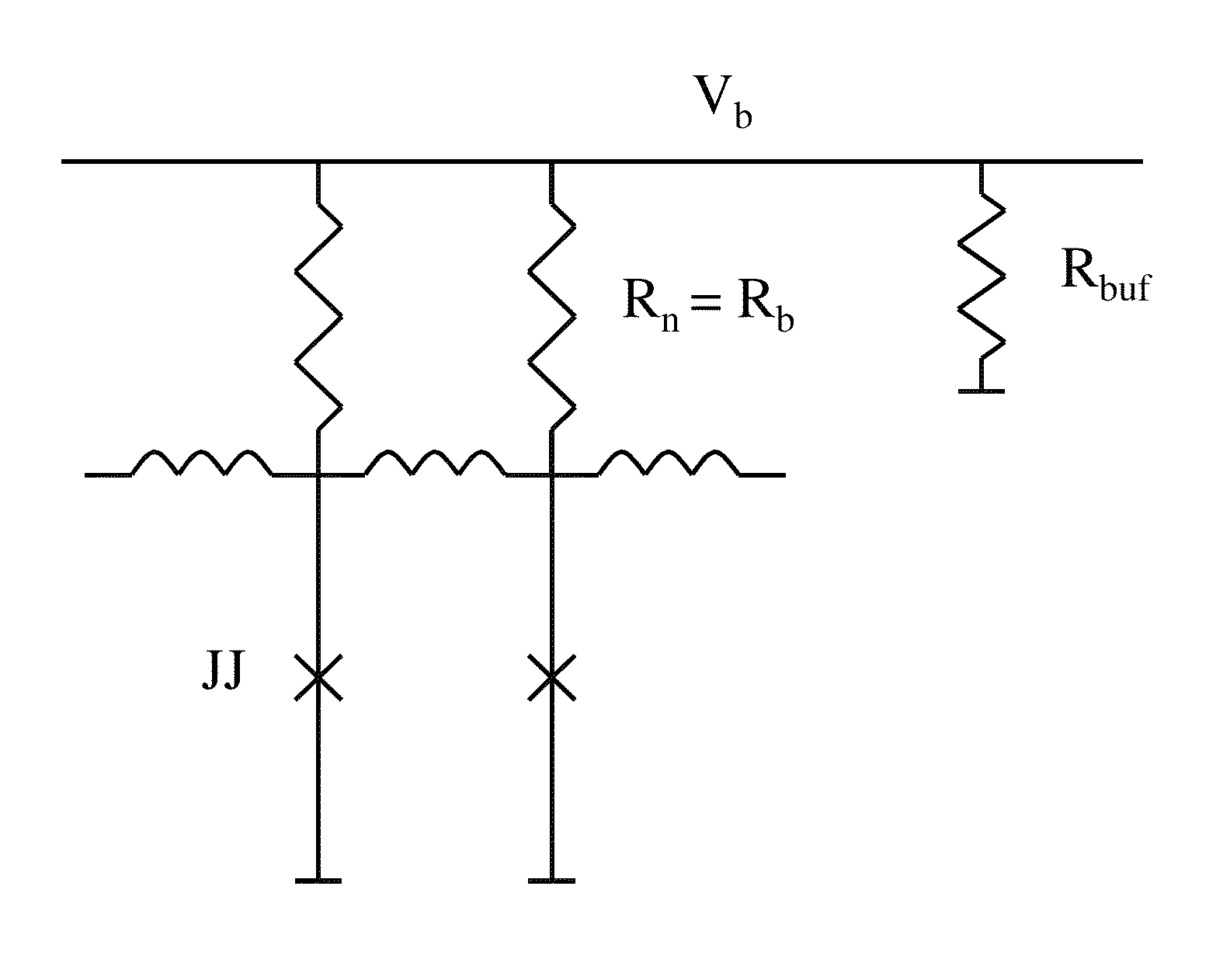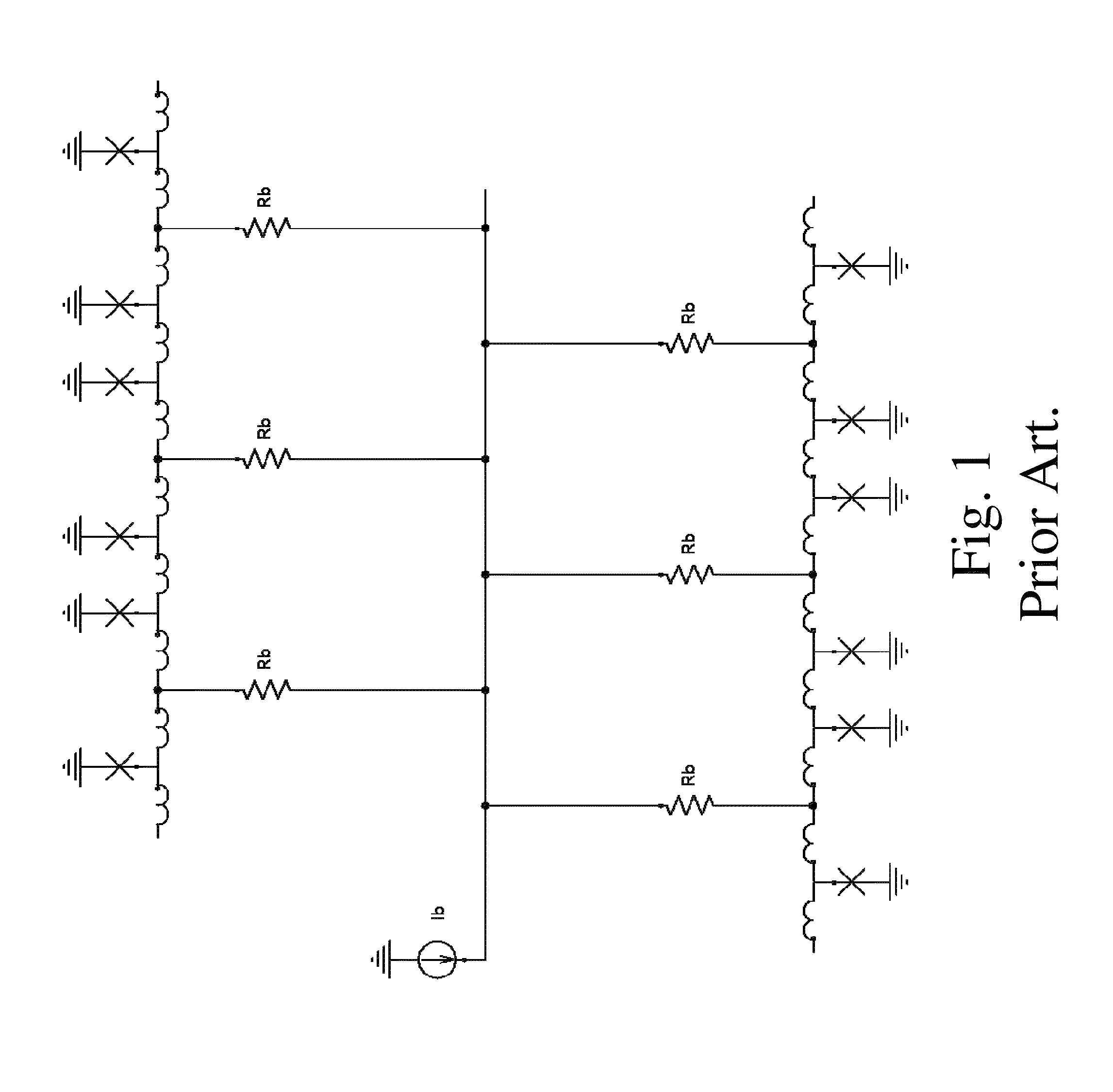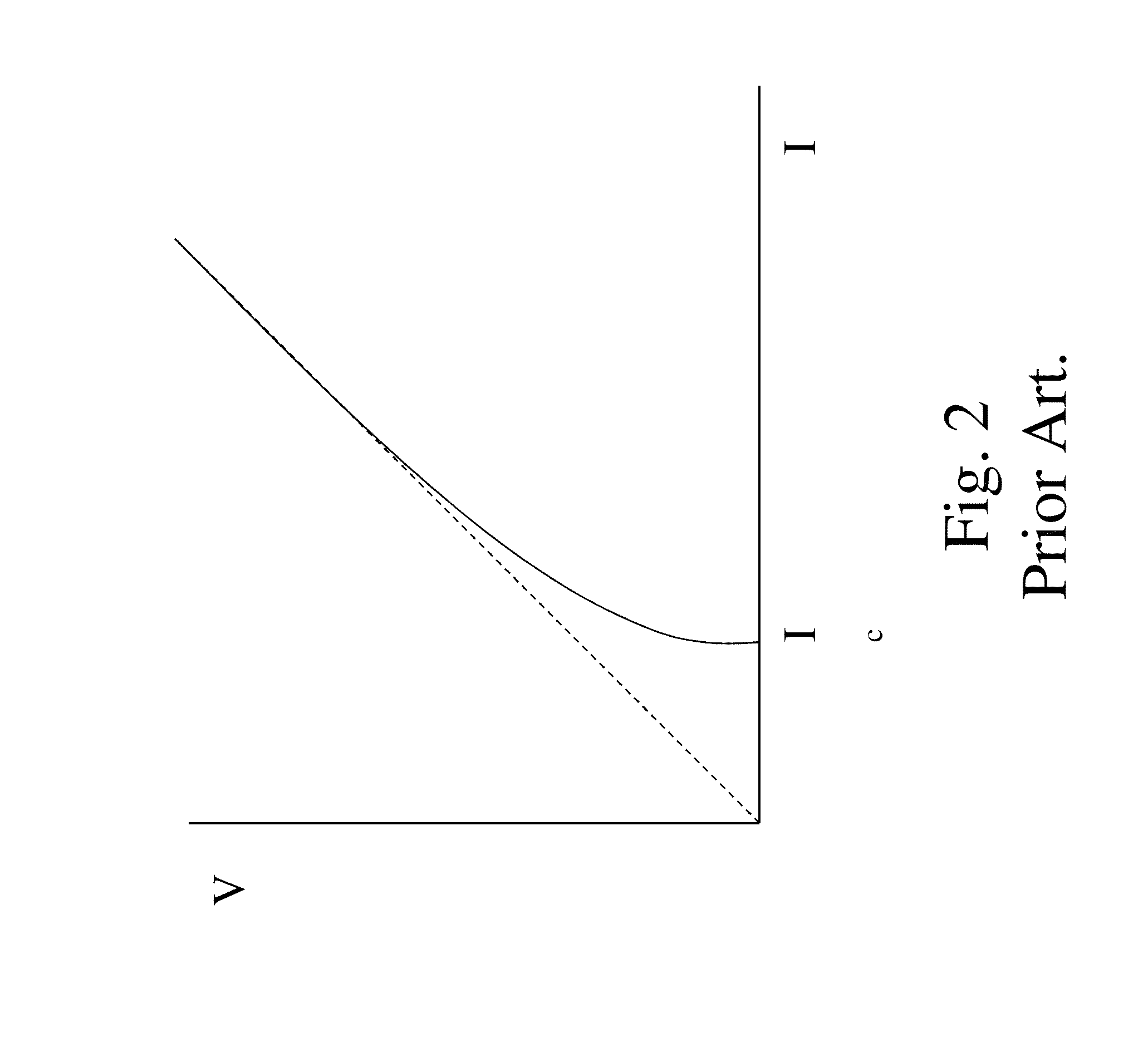Low-power biasing networks for superconducting integrated circuits
a superconducting integrated circuit and biasing network technology, applied in the field of superconducting integrated circuits, can solve problems such as system destabilization, achieve the effects of maintaining stability over a range of data sequences, high dynamic impedance, and maintaining stability of operation over a rang
- Summary
- Abstract
- Description
- Claims
- Application Information
AI Technical Summary
Benefits of technology
Problems solved by technology
Method used
Image
Examples
Embodiment Construction
[0093]The several preferred embodiments are hereby described in greater detail, with reference to the figures.
[0094]FIG. 1 of the prior art shows a current source providing bias current to two Josephson transmission lines (JTLs), one on the top and the other on the bottom. A JTL comprises a set of parallel Josephson junctions (each symbolized by ‘X’) connected by small inductors, and functions as an active transmission line for SFQ pulses.
[0095]A set of parallel resistors Rb is used to bias the set of JTLs at a constant current less than the critical current Ic of the junctions, so that there is no voltage or static power in the junctions. When an SFQ voltage pulse is introduced at one end of the JTL, it causes each junction in turn to exceed Ic in a transient fashion, generating an SFQ pulse which propagates to the next junction.
[0096]Each Josephson junction in FIG. 1 is actually a damped Josephson junction. While there are technologies whereby sufficient damping can be provided by...
PUM
| Property | Measurement | Unit |
|---|---|---|
| DC bias voltage | aaaaa | aaaaa |
| clock frequencies | aaaaa | aaaaa |
| bias current dynamic deviation | aaaaa | aaaaa |
Abstract
Description
Claims
Application Information
 Login to View More
Login to View More - R&D
- Intellectual Property
- Life Sciences
- Materials
- Tech Scout
- Unparalleled Data Quality
- Higher Quality Content
- 60% Fewer Hallucinations
Browse by: Latest US Patents, China's latest patents, Technical Efficacy Thesaurus, Application Domain, Technology Topic, Popular Technical Reports.
© 2025 PatSnap. All rights reserved.Legal|Privacy policy|Modern Slavery Act Transparency Statement|Sitemap|About US| Contact US: help@patsnap.com



